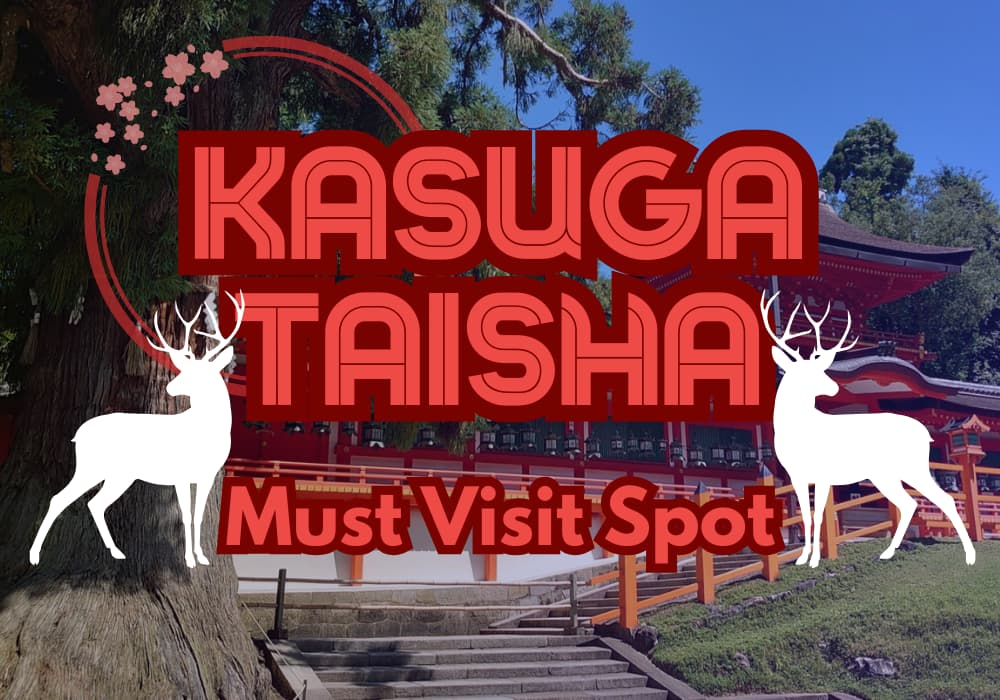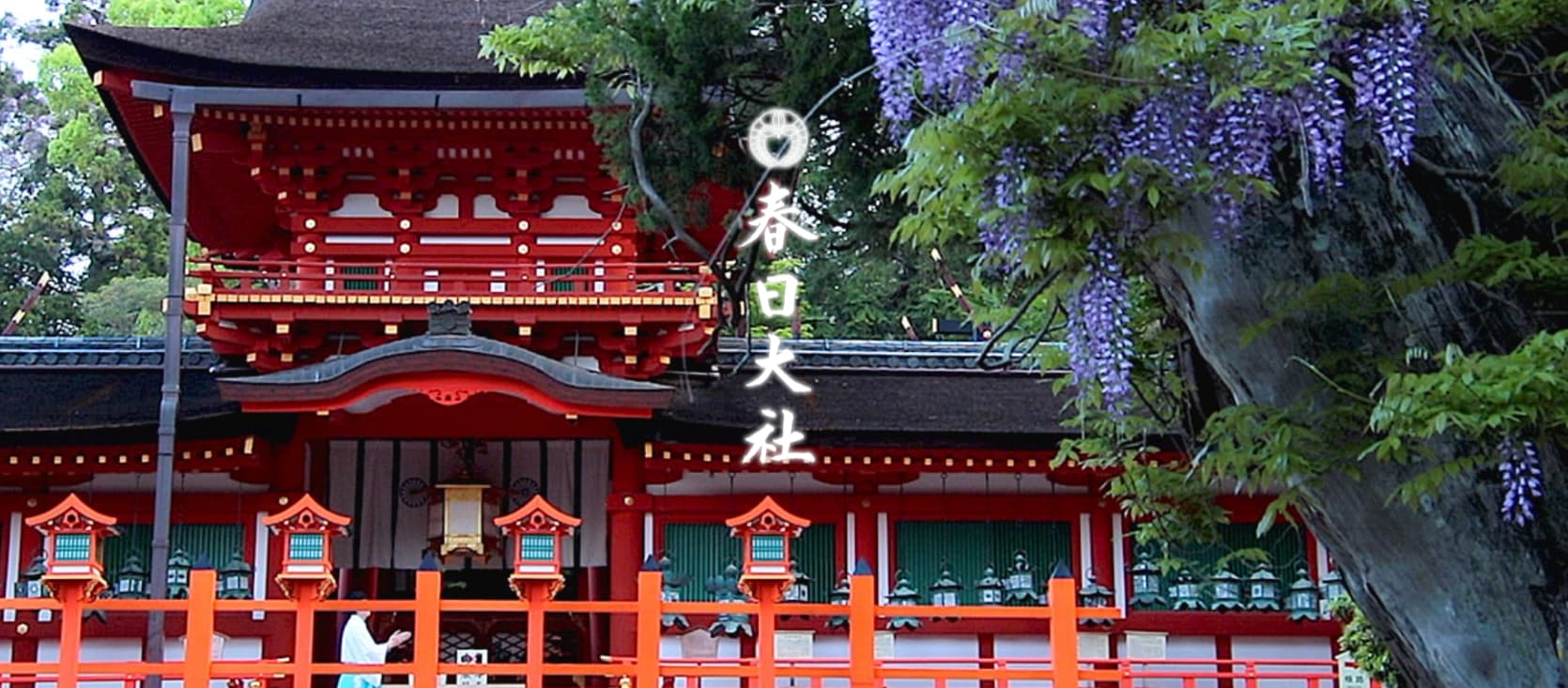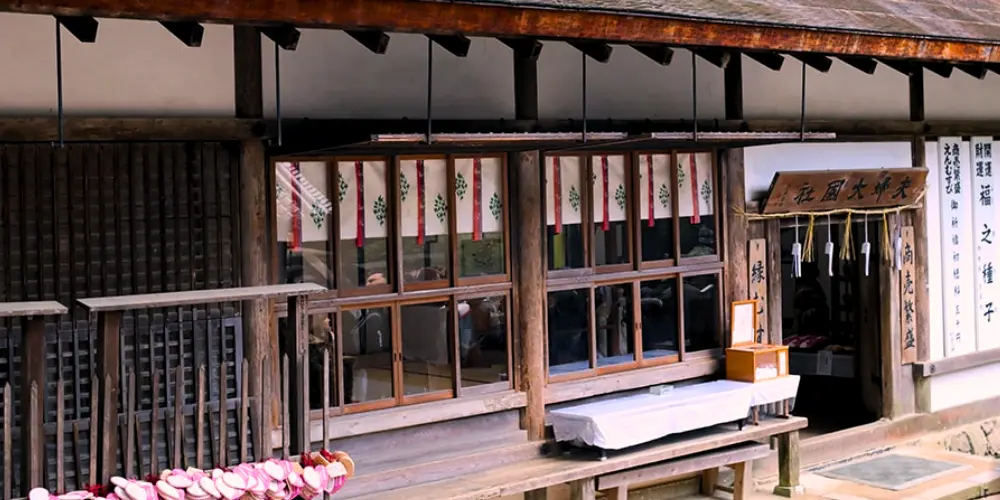Located in the heart of Nara City, Kasuga Taisha Shrine is the head shrine of all Kasuga shrines nationwide.
Its history dates back 1300 years to the Nara period, when the capital was moved from Asuka to Heijō-kyō. Registered as a World Heritage Site, Kasuga Taisha is a valuable spot where visitors can experience Japan’s traditional culture and natural beauty all at once.
In this article, we will introduce the charms and highlights of Kasuga Taisha.
Kasuga Taisha Shrine
An amazing surprise is waiting for you
Lantern Shrine. Full of stone and wooden lanternes dueing the path to shrine and many more metals lanterns inside. Most people climb to the shrine and just take pictures from outside. Take tickets and get in. An amazing surprise is waiting for you: A dark room with full of lightened lanterns. Mesmerizing…
Really beautiful
Really beautiful forest surrounding the shrine. A magical feel to it. Aspects remind me of Angkor Watt. Tue deer wander throughout the monuments, trees and pathways. The tree roots are stunning with the intricate patterns they make. The shrine itself is a paid entry but the best parts are probably the pathways around it. It’s also nice that not many tourists go there so it’s not too busy.
Amazing!
It was breathtakingly beautiful! We went there too early, so the main shrine was still closed. However, we just felt the most purifying atmosphere with the holistic deer. Amazing!!
From Google Review – Kasuga Taisha Shrine
| Open Hours | 6:30 – 17:30 |
| Official Website | https://www.kasugataisha.or.jp/ |
Located in the heart of Nara City, Kasuga Taisha was founded in 768 when Takemikazuchi-no-Mikoto was welcomed from Hitachi Province (modern-day Ibaraki Prefecture) as the guardian deity of Heijō-kyō.
Since then, it has been widely revered by the imperial family, nobility, famous samurai, and the general populace. The shrine grounds, extending at the foot of Mount Mikasa, are lush and provide a soothing atmosphere for visitors. The precincts feature magnificent vermilion-painted buildings and various shrines that offer blessings such as matchmaking.
There are numerous attractions like the National Treasure Hall and the Man’yō Botanical Garden. Visitors can also enjoy cafes and shops, making it a place with diverse offerings for everyone.
Deer as Divine Messengers of Kasuga Taisha

According to legend, Takemikazuchi-no-Mikoto, the deity of Kasuga Taisha, arrived riding a white deer. As a result, Kasuga Taisha reveres about 1,380 deer as divine messengers.
Such deep coexistence between deer and people can only be found in Nara. Incidentally, the deer in Nara Park are designated as a national natural treasure.
They are not domesticated but wild animals, so please be cautious. When feeding them deer crackers, do not tease them or approach deer with fawns, as they may exhibit aggressive behavior. Additionally, do not feed them anything other than deer crackers, as it can cause health issues.
Highlight of Kasuga Taisha Shrine
Kasuga Taisha, surrounded by nature, boasts many attractions.
In this section, we will highlight the must-see parts when visiting Kasuga Taisha. You will understand why Kasuga Taisha is loved by many both domestically and internationally, and why it is well worth a visit.
Kasuga Taisha Main Shrine
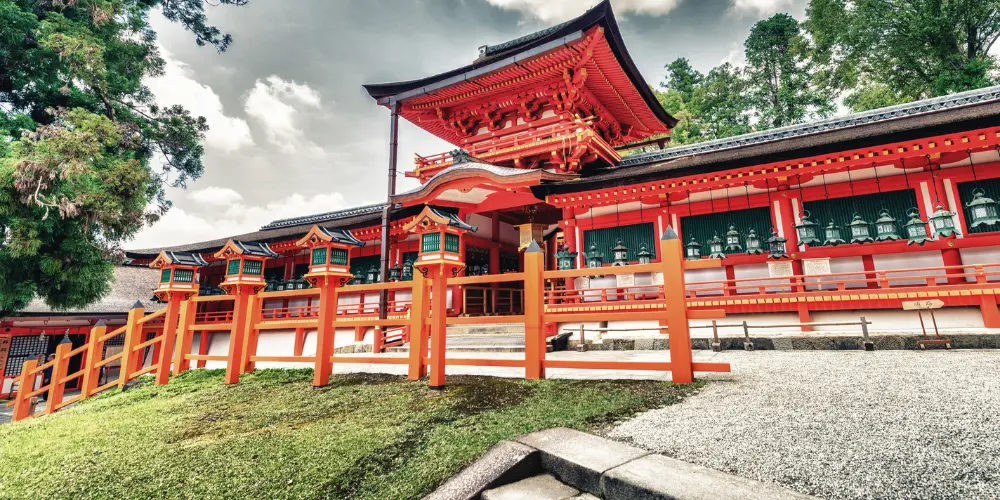
The Main Sanctuary of Kasuga Taisha is a quintessential example of traditional Japanese shrine architecture, highly regarded for its beauty and historical significance. The main sanctuary features a unique four-shrine structure, each enshrining a principal deity and built independently.

The sanctuary is constructed in the distinct Kasuga-zukuri architectural style, which significantly influenced later shrine architectures.
Kasuga-zukuri is characterized by its linear roof shape and intricate decorations, combining simplicity with elegant beauty.
Surrounding the main sanctuary are numerous auxiliary shrines and administrative buildings, which add to the charm of Kasuga Taisha.
https://www.kasugataisha.or.jp/wp-content/uploads/2020/02/gohonden-2.pdf
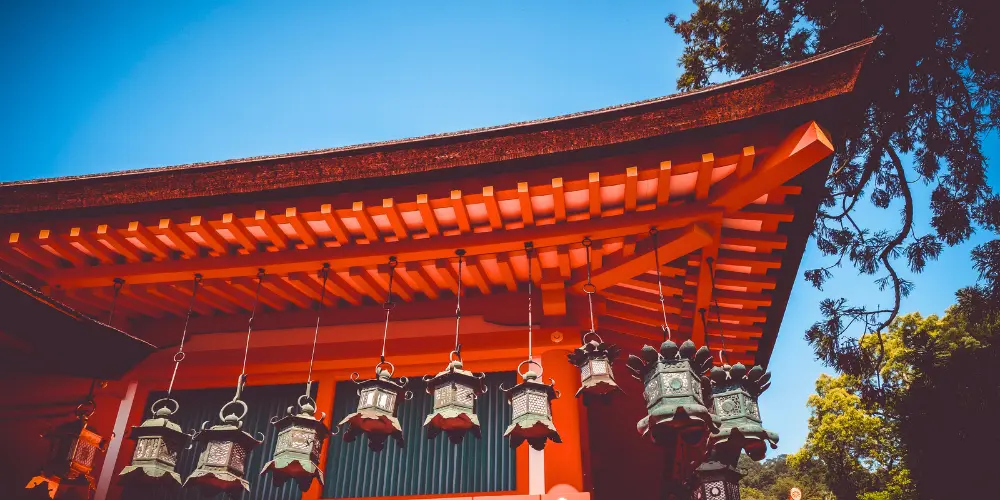
Additionally, the main sanctuary serves as the focal point for annual events and festivals, attracting numerous worshippers. Notably, during the “Mantoro” festival, the area around the main sanctuary is illuminated with lanterns, creating a magical atmosphere.
The Main Sanctuary of Kasuga Taisha is a place where visitors can deeply appreciate Japan’s culture and tradition through its historical background and beautiful architecture. Visitors can enjoy the solemn atmosphere and the harmony with nature that the sanctuary provides.
The East Corrido
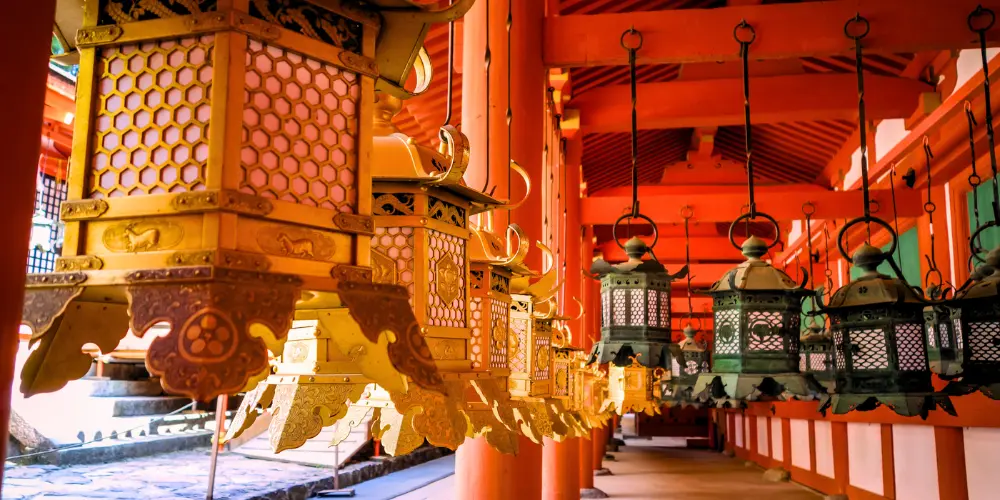
The East Corridor of Kasuga Taisha is an important part of the shrine’s structure, offering visitors a sense of history and beauty. The East Corridor is approximately 37 meters long, with the Yōkōmon Gate located near its center. This gate plays a crucial role in connecting the East Corridor with the Higashi Mikado.
The East Corridor is part of the passage that extends from the South Corridor to the North Corridor, forming a continuous structure that surrounds the main sanctuary. Built in the distinctive Kasuga-zukuri architectural style, the corridor’s beautiful wooden construction captivates visitors. The contrast between the vermilion-painted pillars and white walls is particularly striking, creating a historic atmosphere.
Walking through this corridor allows worshippers to appreciate the magnificent architecture of Kasuga Taisha and its profound history. The corridor is adorned with seasonal scenery, with cherry blossoms and wisteria flowers in spring and vibrant autumn leaves enhancing its beauty in the fall.
The East Corridor is an essential area within Kasuga Taisha, where the harmony of architecture and nature can be fully experienced, providing a deep understanding of the cultural and historical value of the shrine.
Mitarai-Gawa
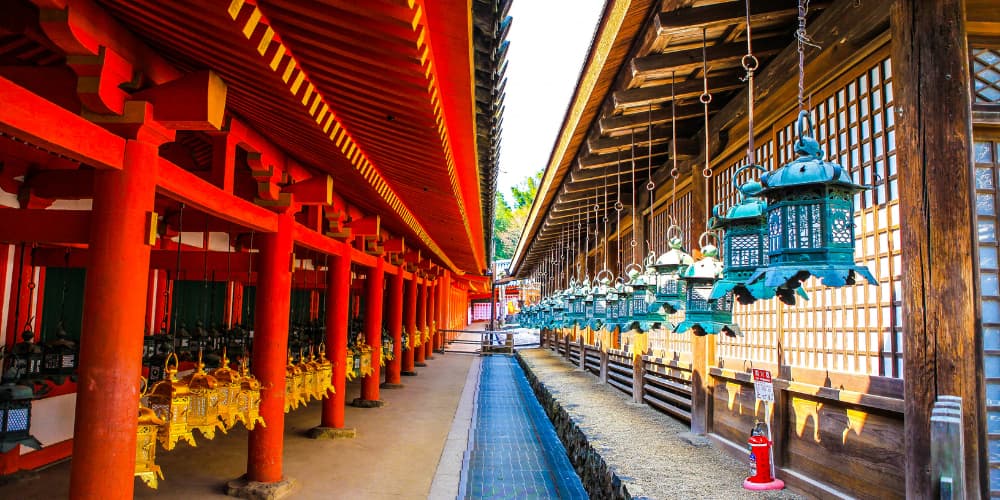
Mitaraigawa is a sacred river flowing within the grounds of Kasuga Taisha, playing an important role for worshippers.
Between the buildings, there is a clear stream. This stream, Mitaraigawa, was created by diverting water from the Mitarigawa, which originates from the sacred Mount Kasuga. Historically, the water was drawn for offerings and used for ritual hand purification by worshippers. The flow of water drawn from the sacred mountain always produces a gentle, pure sound, providing a sense of tranquility to visitors.
During the Kasuga Festival, the “Temizu no Gi” ritual, performed by the imperial envoy, takes place beside this stream, just inside the Keiga Gate. This ceremony symbolizes the purification of body and mind with the sacred water, allowing worshippers to approach the shrine with a cleansed spirit.
Mitaraigawa is a key spot to experience the history, tradition, and natural beauty of Kasuga Taisha.
Fujinaminoya

Kasuga Taisha is renowned for the numerous lanterns that have been dedicated to it, with the “Mantoro” (Lantern Festival) being particularly famous. Mantoro is a beautiful ceremony where countless lanterns within the shrine grounds are lit simultaneously, a tradition cherished by many people for centuries. To recreate this tradition, the “Fujinaminoya” was established.
Fujinaminoya is a building located within the grounds of Kasuga Taisha, where visitors can experience the enchanting atmosphere of Mantoro throughout the year. Inside the building, numerous lanterns are displayed, each illuminated to create a scene reminiscent of a night during the Lantern Festival. This setting allows visitors to quietly observe the lanterns and enjoy their mystical ambiance.
Fujinaminoya not only preserves and showcases the lanterns, which are important cultural properties of Kasuga Taisha, but also plays a role in conveying their beauty to contemporary worshippers and tourists.
Meoto Daikokusha
One of the “Fifteen Shrines of Wakamiya” within the grounds of Kasuga Taisha is “Meoto Daikokusha.”
This shrine enshrines the married couple of Daikoku-sama, and many visitors come to pray for marital harmony, household safety, and matchmaking. It is a significant place for those wishing for a happy marriage and family peace, as visiting as a couple is believed to strengthen their bond.
The shrine is surrounded by a tranquil environment and beautiful nature, offering visitors a moment of relaxation.
The Wakamiya Fifteen Shrines Pilgrimage

| Reception Hours | 9:00 – 15:00 |
| Initial Offering Fee | 1,500 Yen |
| Details | https://www.kasugataisha.or.jp/guidance/wakamiya/ |
The Wakamiya Fifteen Shrines Pilgrimage is a traditional event where visitors sequentially worship at fifteen small shrines located within the grounds of Kasuga Taisha.
These shrines are situated to the east of the main sanctuary and each enshrines different deities.
The shrines enshrine deities who protect against various hardships encountered in life. It is notable for allowing visitors to pray for a wide range of blessings all at once, including good relationships, luck, financial prosperity, business success, and longevity. Many visitors come to pray for various blessings such as health, prosperity, household safety, and academic success.
The reception area for the Wakamiya Fifteen Shrines Pilgrimage is at the “Meoto Daikokusha” (Married Couple Daikoku Shrine). At Meoto Daikokusha, pilgrims can receive the Tamagushi Fuda (small wooden prayer plaques) used during the pilgrimage. Sequentially visit the fifteen small shrines, offering the Tamagushi Fuda and praying at each one.
Access to Kasuga Taisha Shrine
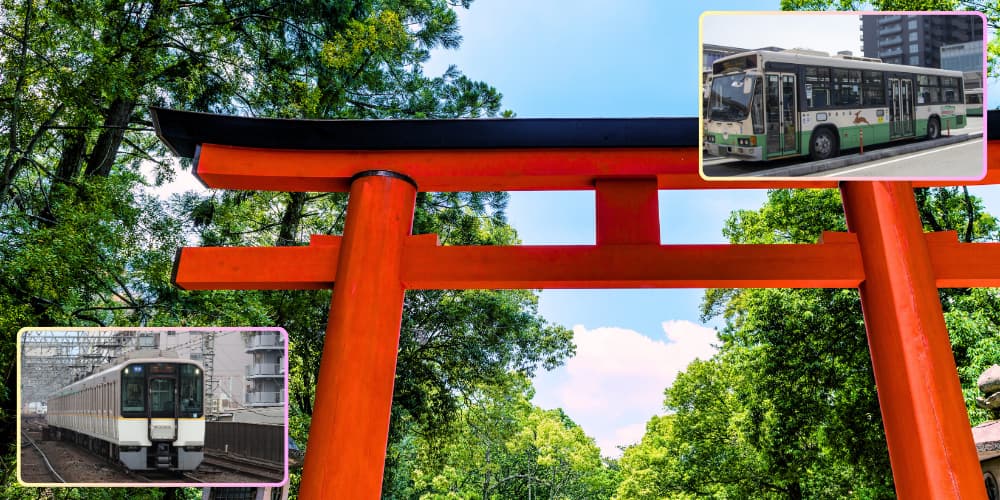
Train and Bus
From JR Nara Station or Kintetsu Nara Station, take the Nara Kotsu Bus and get off at the “Kasuga Taisha Honden” stop. It is about a 10-minute walk from the bus stop.
By Foot
It is about a 20-minute walk from Kintetsu Nara Station to Kasuga Taisha. The typical route passes through Higashimuki Shopping Street and Nara Park.
From Nara Park
You can walk through Nara Park to reach Kasuga Taisha. Follow the signs within the park, enjoying the scenery along the way. It takes about 30 minutes on foot.
